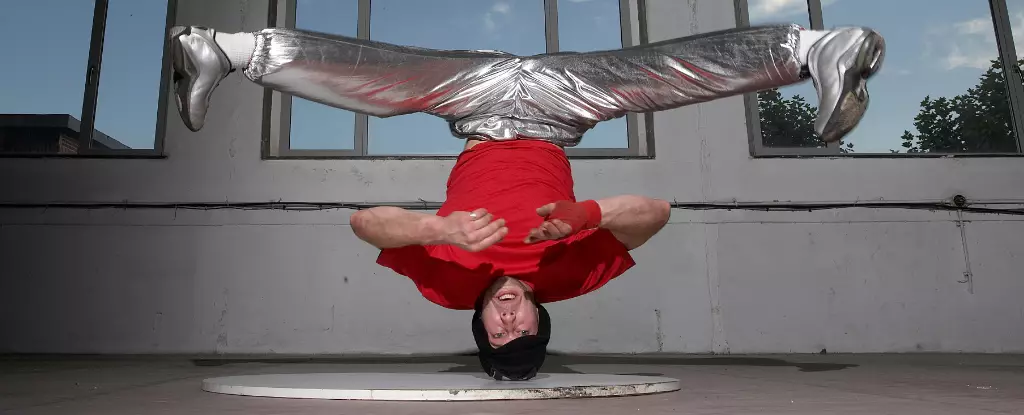For those unfamiliar with the subculture of breakdancing, the term “Conehead” may elicit images of a 90s comedy character. However, for seasoned breakdancers, a cone-shaped head is the chilling byproduct of their art. A recent medical case in 2024 revealed a condition informally dubbed the “breakdancer bulge,” affecting performers with several years of experience owing to the repetitive head movements they execute during their craft. Specifically, the issue arises from a prolonged practice of headspins, resulting in a distinctive bulge atop the scalp—a fascinating yet alarming testament to the physical repercussions of the sport.
Headspins, integral to many breakdancing routines, induce a form of trauma that prompts the body to respond defensively. This reaction leads to a thickening of the epicranial aponeurosis, a crucial connective tissue layer supporting the head. As this and the underlying fat layer adjust in thickness to guard against skull injuries, hair loss often accompanies this bulging phenomenon. Strikingly, a study indicates that upwards of 30% of breakdancers report experiencing hair loss and inflammation as a direct consequence of their dedication to the dance form.
However, the alarming shape of a dancer’s head is merely the tip of the iceberg when discussing breakdancing injuries. A myriad of other ailments frequently plagues these athletes thanks to the physical demands of their performances. Wrist, ankle, and knee injuries are commonplace, arising from complex and strenuous movements that characterize breakdancing. Particularly high-risk moves like “the windmill” and “the backspin” have been linked to bursitis, a condition that induces inflammation of the fluid-filled sacs cushioning vertebrae.
The potential consequences of commitment to breakdancing can often spiral into more severe territory, with injuries such as broken bones becoming a grim reality. It’s worth noting that though severe injuries, such as broken necks, remind the community of the risks, many dancers continue to push their limits, displaying a resilience that is admirable yet alarming.
As with any activity featuring physical prowess, employing protective gear can significantly mitigate injury risks. While breakdancers often eschew traditional athletic safety equipment for the sake of aesthetic and mobility, awareness around sports safety is gradually increasing. The introduction of padded headgear or protective mats could potentially lessen the likelihood of coneheads and other injuries; however, the cultural clout of breakdancing often relies on stylized expression over safety, presenting a unique contradiction within the sport.
Further emphasizing the gravity of these injuries, we see dancers like Ukrainian breakdancer Anna Ponomarenko, who experienced terrifying incidents of paralysis resulting from nerve pinching. Despite such setbacks, her impressive comeback to represent her nation in the Paris 2024 Olympics serves as a beacon of hope and determination in the community.
The phenomenon of cone-shaped heads isn’t limited to breakdancers, nor is it a recent development. Infants can also present with this unusual head shape following delivery. The compressive nature of labor—where a baby’s skull is molded as they navigate through the birth canal—can culminate in a conical appearance. It’s important to note that conditions like caput succedaneum and cephalohematoma share similarities, wherein fluid or blood may collect around a newborn’s skull. Contrary to a breakdancer’s injury that can persist, these infant conditions typically resolve within weeks, showcasing the remarkable adaptability of the human body.
In some cases, infants may be born with craniosynostosis, a condition that requires careful medical intervention. Here, crucial bony plates fuse too early, impacting the skull’s shape. Though surgery is often employed to rectify the shape when detected early, routine monitoring can often suffice, negating the need for drastic measures in many cases.
While the term “conehead” evokes humor and nostalgia for some, its presence reveals complex narratives surrounding both breakdancers and newborns. Whether regarding seasoned dancers confronting the physical toll of their craft or the innocent shape of a newborn’s head molded by nature, the implications of the conehead condition extend far beyond mere aesthetics. With the knowledge gained from the experiences surrounding this phenomenon, greater awareness of preventive measures and medical attention can ensure the safety of breakdancers, as well as a continued understanding of the well-being of newborns experiencing natural birthing processes. Through education and acknowledgment, both dancers and parents can navigate the potential challenges ahead, pushing towards a healthier and informed future.

